Improve Your Art by Seeing in Black and White
If you train your eyes to see in values of black and white this will help improve your paintings.
But, what does seeing in black and white actually mean? In this article, I will explain…
For centuries, the Japanese have understood the importance of seeing in black in white for design purposes. During my plein air painting workshops, I introduce my students to the Japanese design principles of Notan.
I taught this concept during my plein air painting workshops in Giverny, France in Monet’s Garden and also in Lucca, Italy in Tuscany.
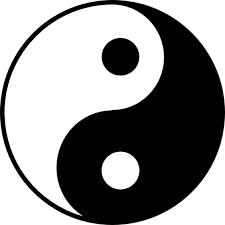
Notan is the Japanese word for light-dark which consists of a two-value arrangement of shapes. Notan is used to define and simplify shape and value patterns.
Obviously, we don’t see the world in black and white and most of us see in color. However seeing in black and white before painting will help improve your art, composition and design.
Two-value Notan sketches will help you simplify the subject, especially when painting outdoors in a complicated environment.
I found an online tools to help illustrate the use of Two and Three Value Notan, a free app called Notanizer. It might seem like cheating, but these are great tools to help the novice see value instead of color.
For centuries, great artists have used tools to help them achieve better paintings. Masters including Leonardo Di Vinci and Johannes Vermeer used the camera obscura. Now we can use our cell phones!
Below, I’ve are a few photos from my spring trip to Monet’s Garden. Notice how with all the beautiful color, different greens, and textures, it is difficult determine the values. Using the Notanizer app helps the student simplify the landscape into two or three values.
The brilliant Japanese designers knew that fewer values help to strengthen the design. In fact, Claude Monet collected Japanese art! He was a big fan of their simplistic designs and compositions.

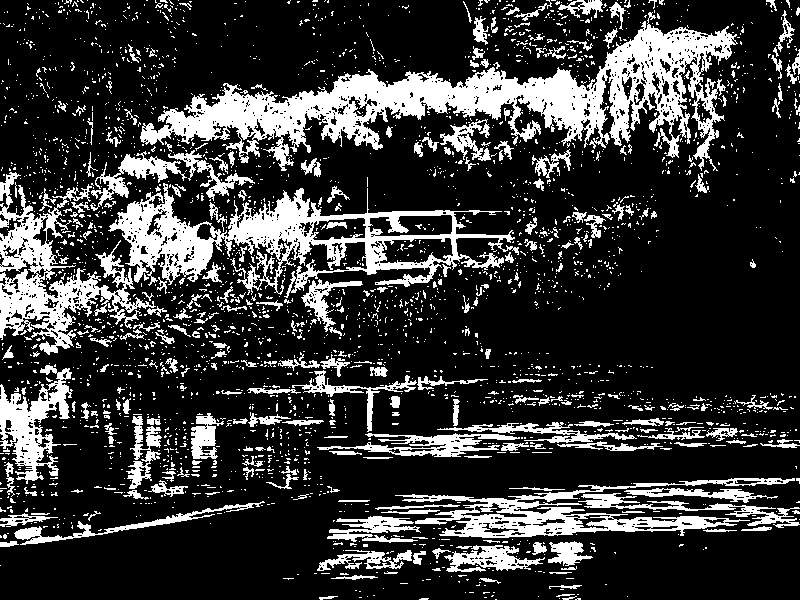
For a warmup I first have my students find a desirable scene. They can photograph it, use the Notan app or simply choose to do some thumbnails sketches in black and white. Below is an example from one of my student’s sketchbooks. This student decided to do a 3-Value Notan.
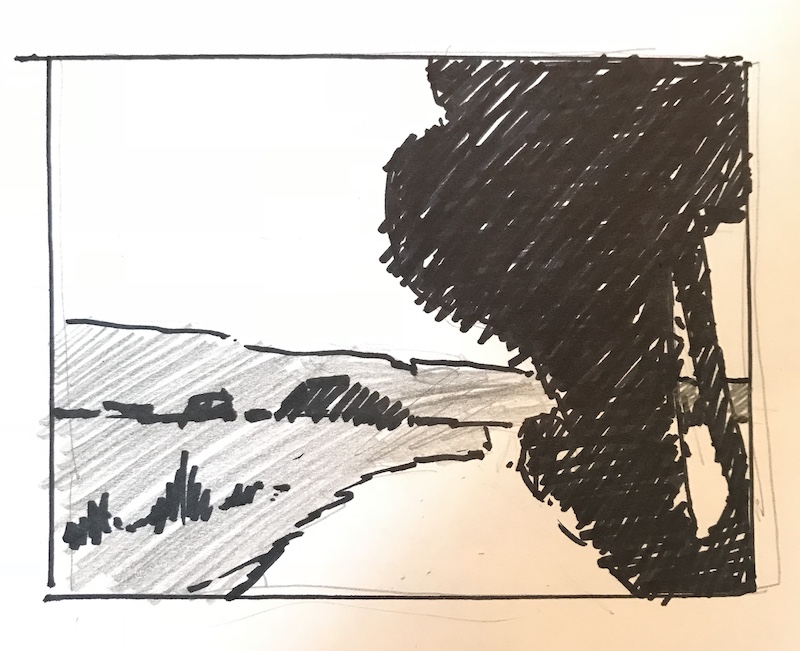
Once Notan is understood, I introduce the 4 value principles for landscape painting. John F. Carlson introduced artists to this concept in his popular book, “John Carlson’s Guide to Landscape Painting” where he explained the 4 MAIN VALUES to landscape painting. This book is invaluable to landscape painters!
The following is a general rule for most landscape painting motifs, keeping in mind that rules can be broken. For instance, snow is lighter than the blue sky!

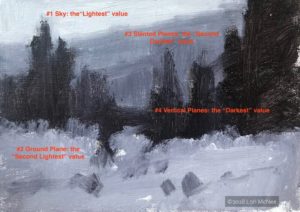
This lesson in VALUE is probably the most important lesson I teach which will immediately improve your art! It’s interesting to note that VALUE is often overlooked, even by professional artists. Like notes on a piano, value helps the artist create the rhythm of the painting.

Today, most successful landscape and still life artists believe in fewer values. This means they strive to limit their composition to approximately 4-values, and sometimes fewer. In representational painting, using fewer values helps the artist create a more cohesive and harmonious work.
Once the students grasp the 4 MAIN VALUES of the landscape, I have them try another fun exercise.
Using their cell phone or tablet, I ask the students to photograph an appealing landscape scene.
- Using the photo editing app, they turn their color photo into a black and white photo. This helps them see the values.
- Then, I ask them to draw a 4 value sketch in their sketchbooks. They can use either pencil, charcoal or ink pens for this exercise.
Below is an example of Romona Youngquist’s nice little sketch.
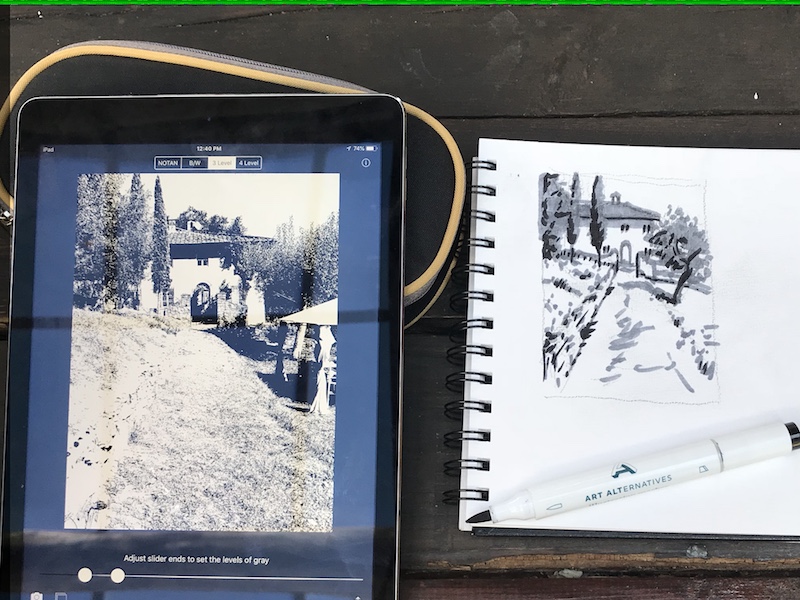
In the following exercise, my students are asked to move onto full color painting! I have them mix up a ‘black’ and then 4-values. Here are a few examples of my students’ work below.
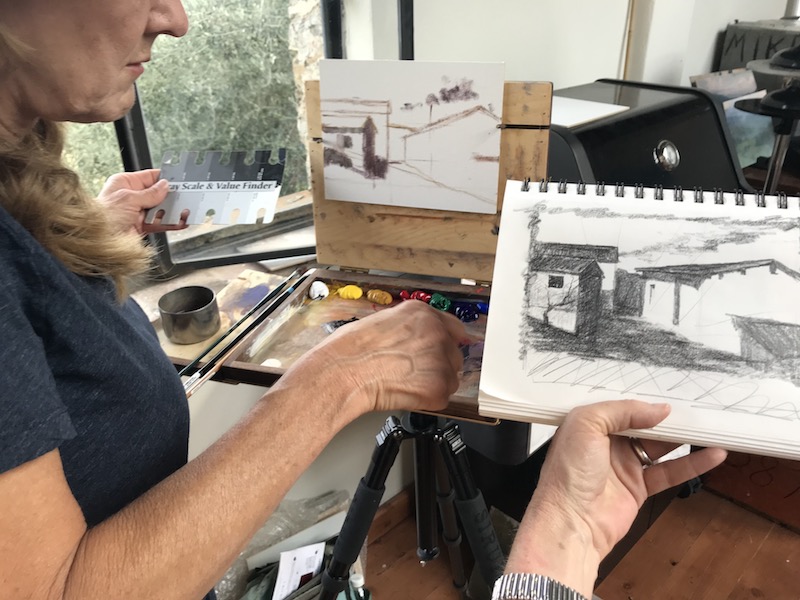
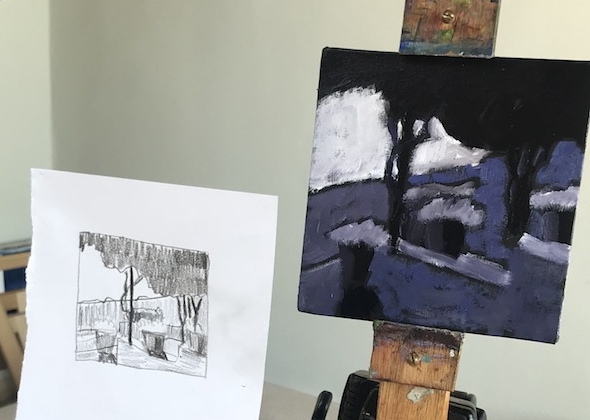
By Day 2, my students have a good understanding of seeing in black and white! Then, they are ready to move onto color. But that will need to be written about in a new blog post… Thanks for the visit! ~Lori
You may enjoy reading my post on the Artists Network. Artists Network.








